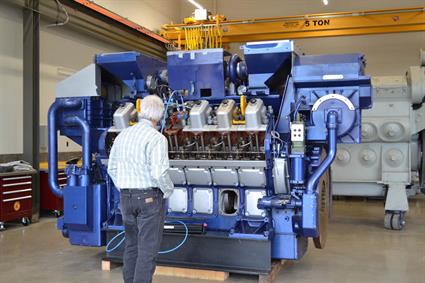

Attracting young talents is a challenge for all modern-day companies. Wärtsilä boosts its presence in the lives of future engineers by collaborating with educational institutions, and a prime example of this hails from the vast prairie of north-western part of the USA. Read on to hear what takes Montana students to the heat of Florida.
Geographically, Montana State University–Northern (MSUN) in Havre, Montana and Wärtsilä North America in Fort Lauderdale, Florida are over 4300 kilometres (2700 miles) apart. However, when it comes to ideologies, the two organisations and their people are actually very close to each other.
“Valuing quality and professionalism is something both Wärtsilä and us share,” says MSUN chancellor Greg Kegel. “And we work hard every day to bring out these attributes in our students as well. We take pride in our outstanding students,” adds the chancellor.
Since 2001, Wärtsilä and the university has been running a joint internship programme, offering top students summer jobs as trainees in Fort Lauderdale. Juan Ruiz, Field Service Resource Manager for Wärtsilä in North America, considers the partnership’s return on investment very high.
“The students from MSU-Northern are very committed and they understand Wärtsilä’s mission and values. We are very happy with the association and are currently ramping up the programme to go beyond the field of engineering,” says Ruiz.
So far, 24 students have interned under this programme and most of them have become permanent Wärtsilians after graduation.
Extraordinary work ethic
Wärtsilä’s presence in the students’ lives begins at an annual career fair at the university. During this event, the company orients them to their operations and possible job opportunities. To apply, the qualifying criteria is that a student has a minimum GPA (grade point average) of 3.5. The figure, topped with an interview, helps Wärtsilä identify and select “the best of the best”, as Ruiz puts it.
The idea is to have the students work for Wärtsilä for two consecutive summers. All interns complete a safety and workshop training and are appointed a mentor who supports them throughout the internship.
In the first year, interns rotate between different stations and workshops, learning as much as possible about Wärtsilä’s different operations.
“The first summer consists of light tasks and learning the Wärtsilä-way-of-working,” tells Ruiz. “When they come back in the following year, things get significantly more difficult and interns will be working together with their mentors.”
The aim is that the second-year interns, after their last year of studies, should come back and join Wärtsilä as graduates. Ruiz says that Wärtsilä is particularly keen to take students who have long-term ambitions.
“We look for hardworking, responsible people who would want to travel, are able fit in a multicultural environment, and are ambitious. Students from MSU-Northern have had a phenomenal record so far.”
This doesn’t come as a surprise to Chancellor Kegel.
“Many of our students have worked on motorcycles, trucks, and snowmobiles prior to their studies, and they gravitate to hands-on work. That’s why they are really good,” he explains. “When they join a programme like Wärtsilä’s, they embrace it as it is something they’ve wanted to do for a long time.”
State-of-the-art engine gears up practice
Wärtsilä, like any other technology company, does everything in its power to appeal to the best talents. One way to ensure that MSU-Northern graduates are familiar with Wärtsilä is the donation the company made last
year: a 12-cylinder Wärtsilä 200 engine, topped with manual, faculty training, and specialised tools.
Chancellor Kegel notes that the equipment needed for practical training is extremely expensive, and thus educational institutions often rely heavily on industry partners. In his view, it’s important to be able to use the same or similar tools that students will be dealing with when they join the industry.
“To have this relationship with Wärtsilä helps us very much,” he tells. “The university wouldn’t be able to purchase such state-of-the-art equipment on its own.”
For Wärtsilä, the donation isn’t just a goodwill gesture. Ruiz notes that as the students learn to operate Wärtsilä-gear and familiarise themselves with the company’s working methods during their studies, they are being prepared to start working with the company as soon as they graduate.


